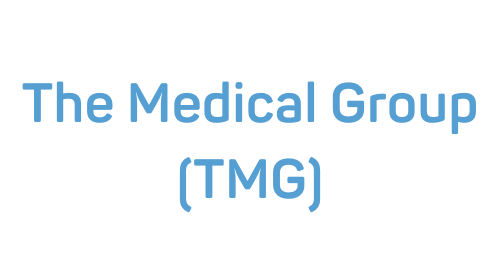Myth Buster: TMG Home Loan Assistance Program
It’s Not Really Free Money — Maybe a Golden Shackle!
I know a ton of physicians working for The Medical Group (TMG), and one of the amazing benefits TMG offers is its Home Loan Assistance Program. However, there’s a lot of confusion and myths about how it actually works.
Today, I want to bust those myths and lay out the facts—so you know exactly what to expect and avoid any surprises later.
What Is the TMG Home Loan?
As a physician employee benefit, TMG offers a Home Loan Assistance Program that provides up to 10% of the home’s purchase price to help physicians buy a primary residence.
Example:
Let’s say you work at TMG and qualify for the home loan program:
You, as a baller dermatologist, decide to buy a $2 million primary residence in California.
TMG provides $200,000 (10% of the purchase price) to assist with the home purchase.
Sounds great, right? But before you get too excited, let’s bust three common myths about the TMG Home Loan Program.
Myth #1: It’s a Down Payment Assistance Program
Reality:
No, the TMG home loan assistance program is not down payment assistance. It is a second mortgage.
How It Actually Works:
You put down 10% as a down payment ($200,000).
TMG provides a secondary loan for 10% ($200,000).
You take out a first mortgage from a bank/lender for 80% of the home price ($1.6M on a $2M home).
The Downsides of a Secondary Loan:
Because your out-of-pocket down payment is only 10%, banks will likely charge you a higher interest rate on the first mortgage. Why? Lenders view this as a higher-risk loan since you have less equity in the home.
Myth #2: The TMG Loan Is an Interest-Free Loan
Reality:
While it can technically be an interest-free loan, it’s not a free loan from a tax perspective.
Why?
Tax laws (Original Issue Discount rules) require TMG to charge you, the borrower, at least the Applicable Federal Rate (AFR)—which is currently around 4% for a 10-year loan—to avoid a negative tax consequences for them.
If TMG didn’t charge interest, they would have to pay taxes on the interest they should have charged you. To avoid this, TMG reports the interest they did not charge you as imputed income on your W-2, meaning you must pay taxes on it—even though you never received any actual money. This type of income is called phantom income—because you’re paying taxes on money you never saw in your bank account.
How Imputed Interest Income Affects You
Let’s break it down using the dermatologist example:
TMG provides a $200,000 secondary loan at a 4% AFR.
Annual imputed interest income = $8,000 (4% of $200,000)
TMG reports $8,000 as imputed interest income on your W-2 each year
Now, let’s talk about your taxes:
If your salary is $600,000 per year, your total tax rate (federal, CA state, and payroll taxes) would be roughly 50%.
This means you will pay $4,000 in taxes per year on the “phantom” imputed interest income.
Over the 10-year loan term, you will have paid $40,000 in taxes for having the TMG loan.
So, while it may be interest-free on paper, it’s not a free loan in reality.
Myth #3: The Interest Forgiveness in Years 6-10 Means a Tax Refund
Reality: No, You Won’t Get a Refund.
Many assume that when TMG forgives the deferred interest in Years 6-10, they should receive a tax refund for the taxes they previously paid on the imputed interest income. Unfortunately, that’s not how it works.
Here’s Why:
In Years 6-10, TMG forgives two years’ worth of deferred interest each year ($16,000 per year in the example). However, since you never actually made any interest payments to TMG, all the “forgiveness” does is eliminate your liability to pay that interest.
How about the taxes you paid on the imputed income?
Even though you paid taxes on the imputed interest income, you never actually paid the interest itself—so there’s nothing to be refunded when TMG forgives it. The “forgiveness of interest” simply eliminates your liability to pay the interest, but it does not generate a tax refund. The only situation where you could recover the taxes you paid on the imputed income is if you actually make interest payments to TMG—such as if you leave your job before Year 10 and have to repay the deferred interest.
What Happens If You Leave TMG Before 10 Years?
If you leave TMG before the 10-year loan period, you are required to pay back the deferred interest that has not been forgiven.
Example: Leaving After 5 Years
You will owe TMG $40,000 ($8,000/year × 5 years) in previously deferred interest payments.
However, you can claim a tax credit under the Claim of Right Doctrine, which allows you to recover the taxes you originally paid on the imputed interest income. This amounts to $4,000 per year × 5 years = $20,000 in tax credits.
This means your net out-of-pocket cost is $20,000 instead of $40,000.
While this tax credit reduces the financial burden, leaving TMG early still comes with a significant expense, so it’s an important factor to consider before making a move.
Final Thoughts
The TMG Home Loan Program can be a valuable benefit, but it’s not “free money.” Before using it, make sure you:
Understand how imputed income works and the tax impact it will have on your take-home pay.
Think ahead about your career plans—leaving early could mean paying back thousands in deferred interest.
At the end of the day, knowing the tax implications upfront can save you thousands of dollars and help you make a smarter financial decision.
Disclaimers: click here
Additional Disclaimers: The Medical Group (TMG) is a fictional employer used solely to illustrate the tax treatments and consequences of a home loan assistance program. Any resemblance to actual entities is purely coincidental.




